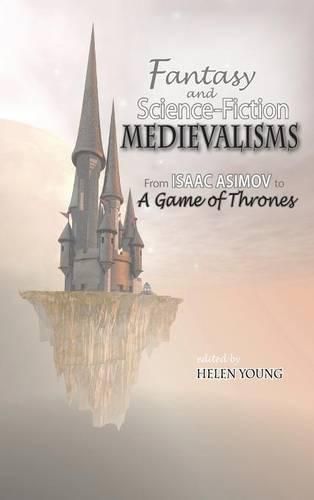Readings Newsletter
Become a Readings Member to make your shopping experience even easier.
Sign in or sign up for free!
You’re not far away from qualifying for FREE standard shipping within Australia
You’ve qualified for FREE standard shipping within Australia
The cart is loading…






This title is printed to order. This book may have been self-published. If so, we cannot guarantee the quality of the content. In the main most books will have gone through the editing process however some may not. We therefore suggest that you be aware of this before ordering this book. If in doubt check either the author or publisher’s details as we are unable to accept any returns unless they are faulty. Please contact us if you have any questions.
From advertisements to amusement parks, themed restaurants, and Renaissance fairs twenty-first century popular culture is strewn with reimaginings of the Middle Ages. They are nowhere more prevalent, however, than in the films, television series, books, and video games of speculative genres: fantasy and science fiction. Peter Jackson’s The Lord of the Rings and The Hobbit film trilogies and George R. R. Martin’s multimedia Game of Thrones franchise are just two of the most widely known and successful fantasy conglomerates of recent decades. Medievalism has often been understood as a defining feature of fantasy, and as the antithesis of science fiction, but such constructs vastly underestimate the complexities of both genres and their interactions. Medieval has multiple meanings in fantasy and science fiction, which shift with genre convention, and which bring about their own changes as authors and audiences engage with what has gone before in the recent and deeper pasts. Earlier volumes have examined some of the ways in which contemporary popular culture re-imagines the Middle Ages, offering broad overviews, but none considers fantasy, science fiction, or the two together. The focused approach of this collection provides a directed pathway into the myriad medievalisms of modern popular culture. By engaging directly with genre(s), this book acknowledges that medievalist creative texts and practices do not occur in a vacuum, but are shaped by multiple cultural forces and concerns; medievalism is never just about the Middle Ages.
$9.00 standard shipping within Australia
FREE standard shipping within Australia for orders over $100.00
Express & International shipping calculated at checkout
This title is printed to order. This book may have been self-published. If so, we cannot guarantee the quality of the content. In the main most books will have gone through the editing process however some may not. We therefore suggest that you be aware of this before ordering this book. If in doubt check either the author or publisher’s details as we are unable to accept any returns unless they are faulty. Please contact us if you have any questions.
From advertisements to amusement parks, themed restaurants, and Renaissance fairs twenty-first century popular culture is strewn with reimaginings of the Middle Ages. They are nowhere more prevalent, however, than in the films, television series, books, and video games of speculative genres: fantasy and science fiction. Peter Jackson’s The Lord of the Rings and The Hobbit film trilogies and George R. R. Martin’s multimedia Game of Thrones franchise are just two of the most widely known and successful fantasy conglomerates of recent decades. Medievalism has often been understood as a defining feature of fantasy, and as the antithesis of science fiction, but such constructs vastly underestimate the complexities of both genres and their interactions. Medieval has multiple meanings in fantasy and science fiction, which shift with genre convention, and which bring about their own changes as authors and audiences engage with what has gone before in the recent and deeper pasts. Earlier volumes have examined some of the ways in which contemporary popular culture re-imagines the Middle Ages, offering broad overviews, but none considers fantasy, science fiction, or the two together. The focused approach of this collection provides a directed pathway into the myriad medievalisms of modern popular culture. By engaging directly with genre(s), this book acknowledges that medievalist creative texts and practices do not occur in a vacuum, but are shaped by multiple cultural forces and concerns; medievalism is never just about the Middle Ages.